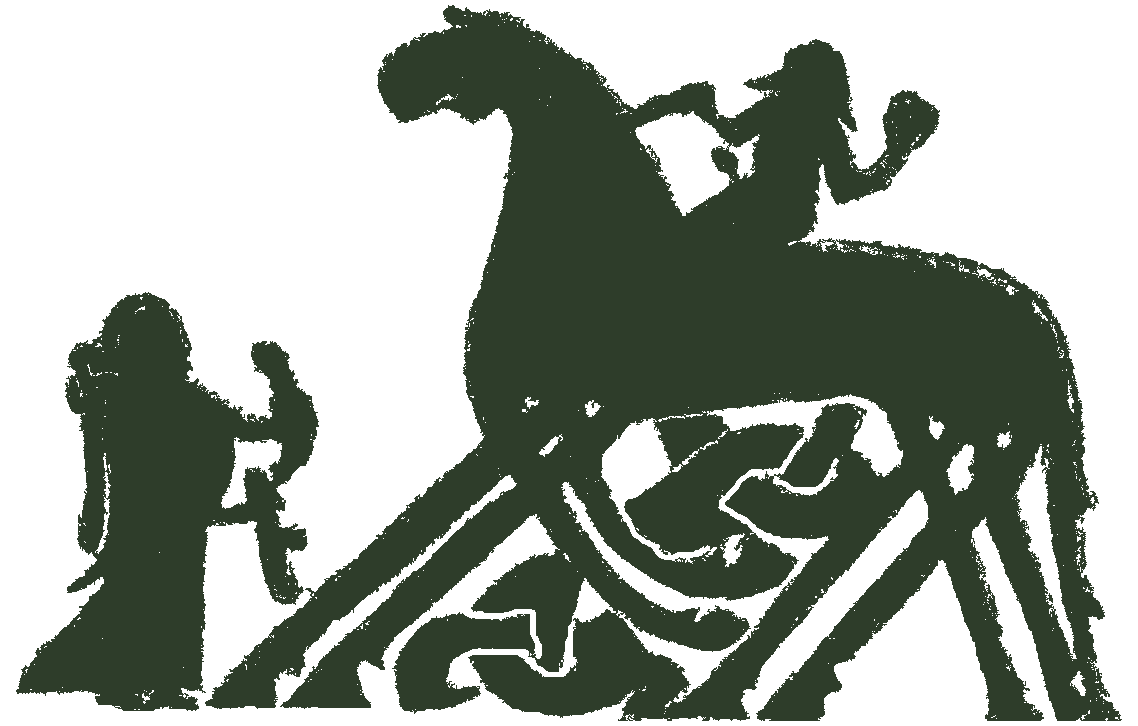13. Accessing the resource
This is not currently part of the peer-reviewed material of the project. Do not cite as a research publication.
The semantic links described in this paper can be represented in a variety of ways, the simplest being as a series of web pages generated by an interface to the database. The pages can contain links to other materials in the resource, or other media where relevant.
Figure 16: Theophoric place names in Scandinavia
In the previous section, Figure 15 shows a number of phenomena that can be geographically locatable, such as places and objects, and these are in turn linked to the religious phenomena represented by the central concepts of the resource. These links can be used to generate, for example, a map of the theophoric place names in Scandinavia, containing elements referring to particular gods. An example of such a map is shown in Figure 16 (place names are taken from Brink 1997 and supplemented from other sources; the author has added coordinate data). In this map yellow dots represent Óðinn place-names, red dots represent Thor, green: Freyr, and blue: Njǫrðr/ *Niærþer. On an online version of the map, the dots can be linked to the original name forms and sources that contain them in the database. References to other place-name elements (such as lundr ‘grove’) which may have significance for religious beliefs and practices can also be used with the same mechanism to produce maps of, for example, theophoric place names which relate to groves.
Geographical data and other media can be combined into synopses of particular phenomena such as beings or narratives. Figure 17 shows a fragment of a web page generated from the resources described in this paper about the narrative of Thor’s encounter with the World Serpent. This includes some basic information about the narrative, along with links to the main material records of the narrative (manuscripts and picture stones), a map of locatable objects and texts of the narrative, and links to individual narrative elements.
[Link] Figure 17: Resources associated with the example narrative
The links to primary materials and map data in Figure 17 are implemented using the relational structure described in sections 4-6 of this paper. Here the map shows only the four visual representations (Altuna, Gosforth, Hørdum and Ardre). The right column of Figure 17 shows links to the textual sections with the narrative using thumbnail images of the stones or manuscript pages upon which the story is recorded. The objects are ranked according to the number of links between the narrative and the object.
For users who need an overview of sources on broader particular topic, sources can be ranked according to the number of links made between the topic and the physical sources; these could also be weighted according to other factors such as date. These kinds of weightings lie behind the rankings in Google searches, for example. The same process can be used, for example, when selecting a particular source: topics associated with the source can be ranked according to the number of intermediary links.
